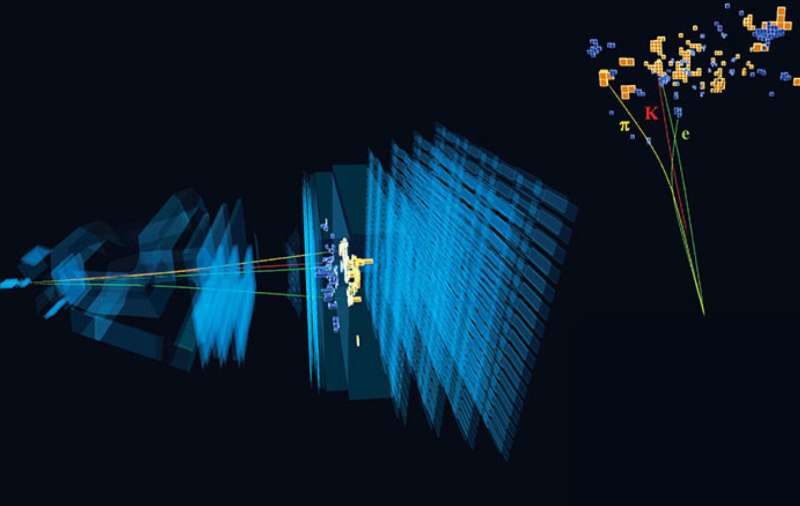New result from the LHCb experiment challenges leading theory in physics

The LHCb Collaboration at CERN has found particles not behaving in the way they should according to the guiding theory of particle physics—the Standard Model.
The Standard Model of particle physics predicts that particles called beauty quarks, which are measured in the LHCb experiment, should decay into either muons or electrons in equal measure. However, the new result suggests that this may not be happening, which could point to the existence of new particles or interactions not explained by the Standard Model.
Physicists from Imperial College London and the Universities of Bristol and Cambridge led the analysis of the data to produce this result, with funding from the Science and Technology Facilities Council. The result was announced today at the Moriond Electroweak Physics conference and published as a preprint.
Beyond the Standard Model
The Standard Model is the current best theory of particle physics, describing all the known fundamental particles that make up our Universe and the forces that they interact with.
However, the Standard Model cannot explain some of the deepest mysteries in modern physics, including what dark matter is made of and the imbalance of matter and antimatter in the Universe.
Researchers have therefore been searching for particles behaving in different ways than would be expected in the Standard Model, to help explain some of these mysteries.
Dr. Mitesh Patel, from the Department of Physics at Imperial and one of the leading physicists behind the measurement, said: “We were actually shaking when we first looked at the results, we were that excited. Our hearts did beat a bit faster.
“It’s too early to say if this genuinely is a deviation from the Standard Model but the potential implications are such that these results are the most exciting thing I’ve done in 20 years in the field. It has been a long journey to get here.”
Building blocks of nature
Today’s results were produced by the LHCb experiment, one of four huge particle detectors at CERN’s Large Hadron Collider (LHC).
The LHC is the world’s largest and most powerful particle collider—it accelerates subatomic particles to almost the speed of light, before smashing them into each other. These collisions produce a burst of new particles, which physicists then record and study in order to better understand the basic building blocks of nature.
The updated measurement questions the laws of nature that treat electrons and their heavier cousins, muons, identically, except for small differences due to their different…
Read More: New result from the LHCb experiment challenges leading theory in physics
